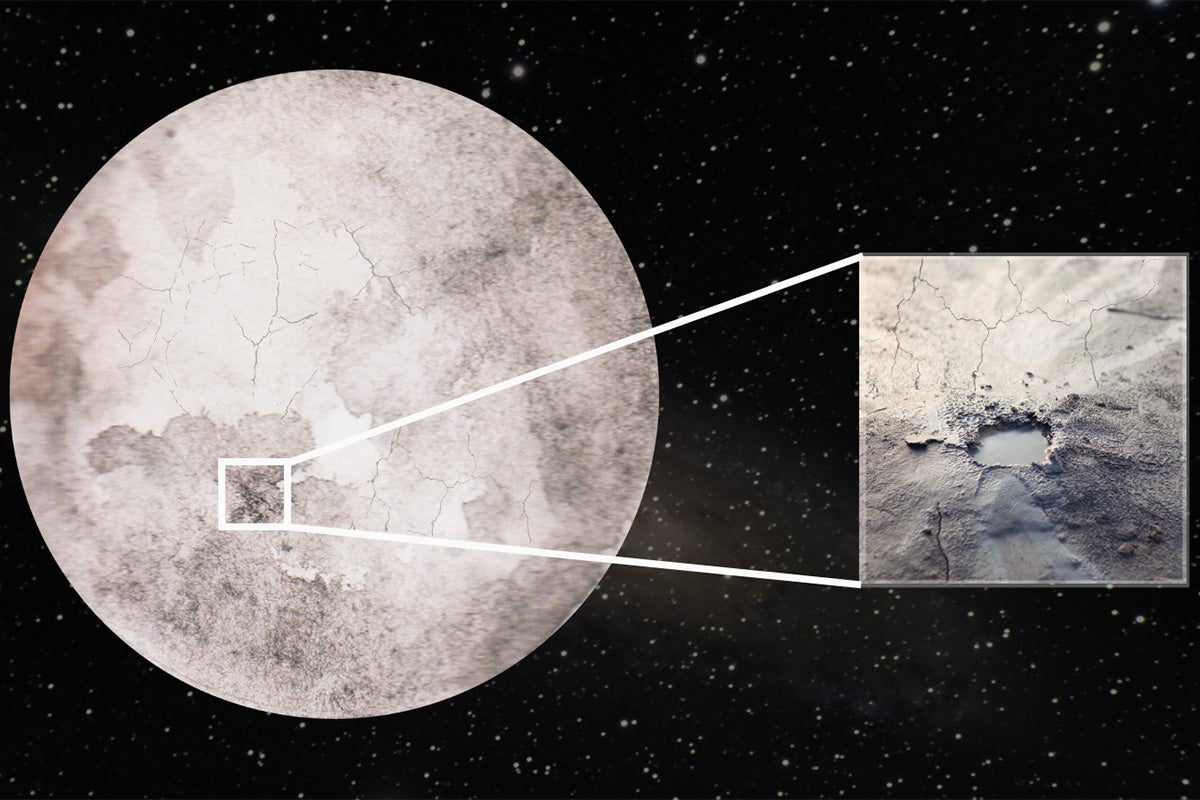University of Central Florida Florida Space Institute researchers are part of a team of scientists who have found evidence of geothermal activity within icy dwarf planets in our solar system.
Using the James Webb Space Telescope, the team — led by the Southwest Research Institute and Lowell Observatory — observed geologically young methane deposits on the surfaces of Eris and Makemake, icy dwarf planets located in the Kuiper Belt in the outer regions of our solar system. These are the first observations of rare methane isotopologues on large, trans-Neptunian objects, minor bodies of the Solar System that lie beyond Neptune.
The findings, published recently in two studies in the journal Icarus, indicate geochemical processes deep in the planets’ interiors and set the stage for considering Eris and Makemake as possible ocean worlds and the most distant candidates for habitability in the solar system.
The results provide additional evidence that icy worlds — rather than being cold and inactive — can be much more internally evolved than once believed.
“Eris and Makemake unveil a surprising narrative of internal dynamism,” says study co-author Noemí Pinilla-Alonso, a research professor with FSI. “The possibility of subsurface oceans and the revelation of rare, methane isotopologues CH3D and 13CH4 on these distant worlds challenge the conventional wisdom of primordial compositions in large trans-Neptunian Objects.”
She says the geochemical evolution of the dwarf planets, as unveiled by Webb spectroscopy, hints at a complex interplay of cryovolcanic processes and warm, or even hot, rocky cores.
“This not only redefines our understanding of these icy worlds but also emphasizes the pivotal role of endogenic forces in shaping the outer solar system bodies,” Pinilla-Alonso says.
Study co-author Ana Carolina de Souza Feliciano, a planetary science postdoctoral fellow at FSI, says previous data analysis from ground-based observations showed that Eris and Makemake resembled Pluto’s surface composition in terms of a large amount of methane ice features, contrasting with the other celestial bodies that also orbit in the region beyond Neptune.
She says JWST observations combined with geochemical models have provided scientists with the tools to study the interiors of dwarf planets, and the discoveries made in the first year of JWST operations anticipate the need to continue using it to explore the region beyond Neptune.
How the Research Was Performed
The JWST team measured the composition of the dwarf planets’ surfaces, particularly the deuterium (heavy hydrogen, D) to hydrogen (H) ratio in methane. Deuterium is believed to have formed in the Big Bang, and hydrogen is the most abundant nucleus in the universe. The D/H ratio on a planetary body yields information about the origin, geologic history and formation pathways of compounds containing hydrogen.
The lead author of the study appearing in the April 2024 issue of Icarus was Christopher Glein, a planetary scientist and geochemist at the Southwest Research Institute.
“The moderate D/H ratio we observed with JWST belies the presence of primordial methane on an ancient surface,” Glein says. “Primordial methane would have a much higher D/H ratio. Instead, the D/H ratio points to geochemical origins for methane produced in the deep interior.”
Glein says the D/H ratio is like a window into the subsurface, and data suggests elevated temperatures in the rocky cores of these worlds to where methane can be cooked up. Molecular nitrogen (N2) could be produced also and was seen on Eris. Hot cores could point to potential sources of liquid water beneath their icy surfaces as well.
Will Grundy, an astronomer at Lowell Observatory and lead author of the study appearing in Icarus’ March 2024 issue, says that their finding of a carbon isotope ratio (13C/12C) suggests relatively recent resurfacing.
“If Eris and Makemake hosted, or perhaps could still host warm, or even hot, geochemistry in their rocky cores, cryovolcanic processes could then deliver methane to the surfaces of the planets, perhaps in geologically recent times,” he says.
Pinilla-Alonso helped obtain and analyze the data, specifically the characterization of the special features in the dwarf planet spectra that were attributed to deuterium (D, an isotope of H). She is also the co-principal investigator of the Webb proposal that provided the data.
She says the study of isotopologues on the surfaces of dwarf planets Eris and Makemake marks a significant breakthrough, shedding light on the outer solar system’s complex nature.
“The measured D/H ratios on Eris and Makemake are much lower than the D/H ratio observed in primordial surfaces in the solar system, for example, the comet 67P/Churyumov-Gerasimenko, recently visited by a spacecraft,” Pinilla-Alonso says. “The distinct isotopic ratios suggest that the hydrogen atoms in the methane on Eris and Makemake likely originated from water, indicating geochemical processes in their warm or even hot deep interiors. These findings, with implications for habitability considerations, highlight JWST’s pivotal role.”
Researchers’ Credentials
Pinilla-Alonso joined UCF in 2015 as an associate scientist in planetary science at the Florida Space Institute. She was also the deputy principal scientist of the Arecibo Observatory since 2017. She received her doctorate in astrophysics and planetary sciences from the Universidad de La Laguna in Spain. Pinilla-Alonso also holds a joint appointment as a professor in UCF’s Department of Physics.
de Souza Feliciano received her doctorate in astronomy from Observatório Nacional de Rio de Janeiro, Brazil and is part of UCF’s Preeminent Postdoctoral Program. She studies the surface composition of trans-Neptunian objects (TNOs). She is involved in DiSCo-TNOs: Discovering the composition of the trans-Neptunian objects, icy embryos for planet formation, a James Webb Space Telescope program that will observe almost 60 TNOs and is led by Pinilla-Alonso.







